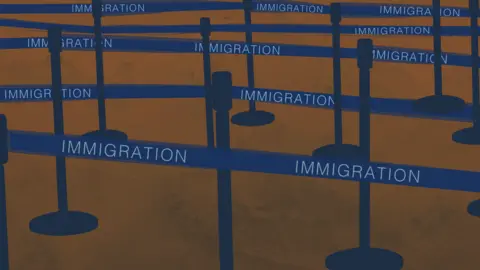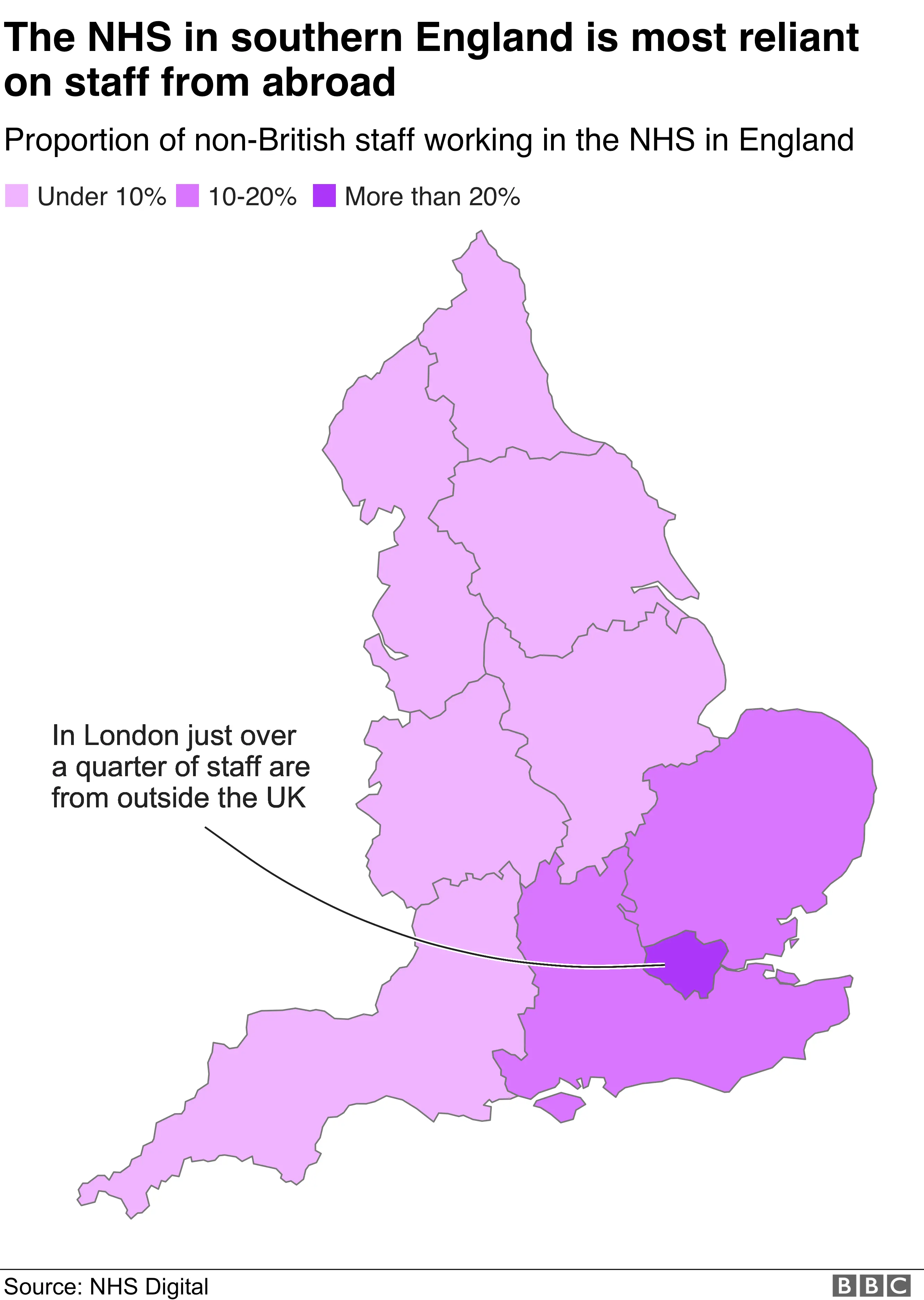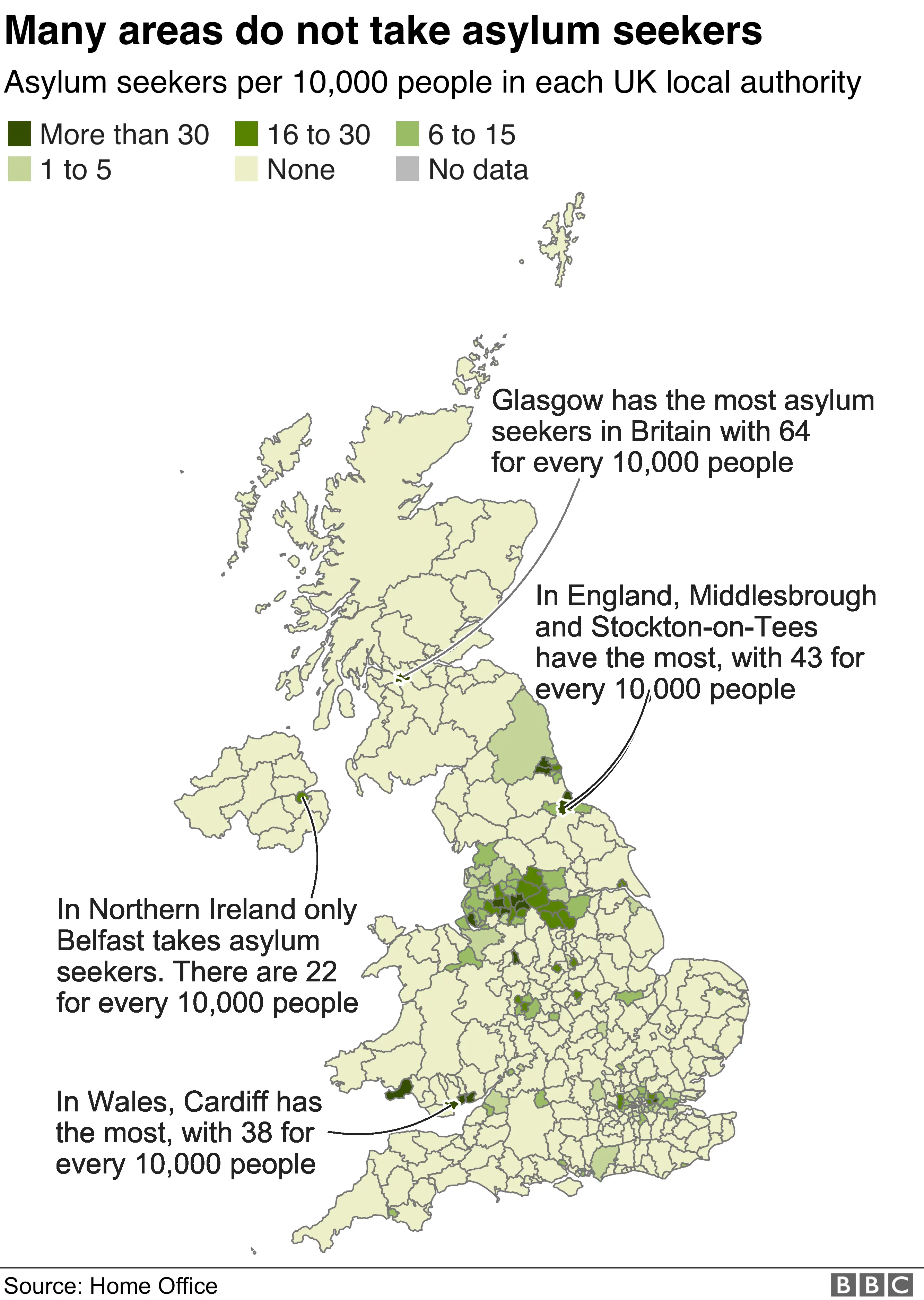How has immigration changed in your area?
 BBC
BBCAn estimated one in seven people living in the UK today was born outside the country.
The majority of these are from outside Europe, often from countries with historical links to the UK.
More than three million people - roughly a third of the immigrant population - come from Commonwealth countries such as India, Jamaica, Australia and Nigeria.
A further three-and-a-half million come from the European Union - a number which has grown more quickly since 2001 than the number from the rest of the world, as free movement has expanded to more countries.
The figure for those born abroad will include some British citizens. A large number of people who come into the UK go on to become British citizens, often through extended residency or family links.
It will also include people born to British parents abroad such as Prime Minister Boris Johnson, who was born in the United States, and actress Emma Watson who was born in France.
Northern Ireland does not produce estimates broken down by local authority, but it is estimated there that fewer than one in 10 of the population was born abroad.
Changing demographics
The growth of immigration from the EU has led to some towns with traditionally small pockets of migrants, in the Midlands and Wales for example, to experience a rapid change in the make-up of their population.

But while there have been increases across the country, a small number of areas - often rural or coastal - have seen a decrease in the immigrant community.
A report by the independent government adviser on migration has said that EU migrants tend to be net contributors to public services. It also reported that they have a small impact on lowering wages and no conclusive impact on house prices.
Once the UK leaves the EU, free movement will stop - but the government has pledged to introduce a new "Australian-style points-based system" which it says will be designed to attract and retain the most highly skilled workers that the UK needs.
Work
Migrants represent just over 15% of the UK's workforce.
They are spread out across different sectors and skill levels, but some industries - such as construction, manufacturing and hospitality - have become more reliant on migrants, according to the University of Oxford's Migration Observatory.
The NHS in England is a key public service that has long relied on foreign doctors, nurses, health professionals and support staff, such as porters and cleaners.

Healthcare experts have long warned of the impact on filling vacancies in both hospitals and care homes if access to foreign labour markets is restricted.
The government says it is drawing up plans to make it easier and cheaper for migrants to come and work in the NHS.
Asylum
Anyone can request asylum in the UK - but first they have to reach the island.
In 2018, the latest year for statistics, 26,441 did so, although only a third of asylum seekers are generally granted refugee status at first (they can appeal against the decision in court).

Until a decision is made, they are supported by the government with housing and a small allowance.
Concerns over unequal distribution of asylum seekers have been raised in the past, with one Home Affairs Select Committee report saying there has been "a clustering of asylum seekers in some of the most deprived parts of the country".
Alongside their international obligations to asylum seekers, local authorities have also played a key part in housing the 20,000 Syrian refugees the UK promised to take.
On this there has been greater "equitable distribution" with two-thirds of English local authorities and every council in Scotland taking at least one refugee.


Some of the data in this article is drawn from BBC Briefing, a mini-series of downloadable in-depth guides to the big issues in the news, with input from academics, researchers and journalists. It is the BBC's response to audiences demanding better explanation of the facts behind the headlines.

Update 22 January 2020: An earlier version of this article included analysis from our Home editor Mark Easton, on the history of immigration in the UK as a political issue. This was subsequently removed because this topic, encompassing half a century of immigration policy, was too broad to cover in a brief text box.
